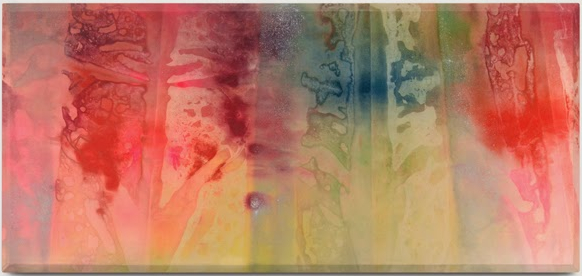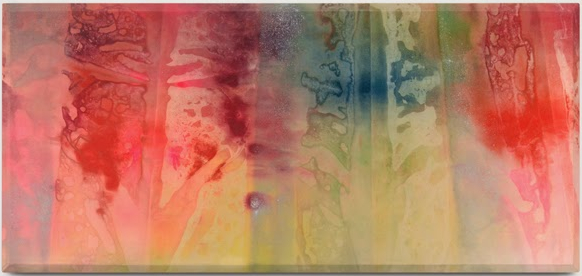Artworks
Sam Gilliam
Red Stanza, 1969
A revolutionary figure in postwar American art, Sam Gilliam helped define the Washington Color School in the mid-1960s and pushed Color Field painting to its extremes. Gilliam utilized the tenets of hard-edge geometric painting as starting points for a series of formal experiments that would soon lead to subsequent breakthroughs in contemporary painting. Gilliam's hard edge geometric abstractions from the mid-60's are widely considered his first mature works. While executed using the same Magna acrylic resin paints preferred by many of his Washington-based peers during this period, these works display a subtle sense of color and texture, and show Gilliam beginning to gradually diverge from the strict parameters of what was understood as Color Field painting. In other works, hard edges start to give way to a more organic interaction of pigments––diagonal stripes and triangular forms divide areas of raw canvas but also blend into one another. No longer wholly reliant on what Kenneth Noland described as a "one-shot" process of pre-conceived design, these paintings show Gilliam developing a freer method of composition.
Sam Gilliamʼs beveled-edge stain paintings from the late 1960s and early 1970s mark one of the signal formal innovations in postwar American abstraction. In 1967, preparing for his first solo museum exhibition at the Phillips Collection in Washington, D.C., Gilliam started radically experimenting with the application of his acrylic paint and its material support. Breaking from his previous hard-edge paintings, as well as the flatness and pure opticality of his local Color School peers, he began crumpling and folding his canvases while staining and splattering them with paint. In the resulting brushless abstractions, colors bleed together and overlap in chance encounters, forms mirror each other rhythmically over structuring creases, and the picture plane becomes as much evidence of a sculptural process as a visual field of Gilliamʼs characteristically bold palette. As if to further emphasize the physicality of these images and their hand wrought development, Gilliam started stretching the finished canvases over a frame with beveled contours. Each installed work appears at once to slope into the surrounding wall and burst forth from it, foregrounding the painting as an object in space with an active relationship to its site. Early beveled-edge paintings like Red Stanza are important precursors for the iconic drape paintings Gilliam would begin to create soon afterward, and a prime example of his treatment of painting as an installation-based, if not also social phenomenon. Representing pioneering steps in expanding the medium's sculptural and architectural potential, Gilliamʼs beveled-edge paintings are a powerful and prescient antecedent for recent non-representational and non-objective art.

